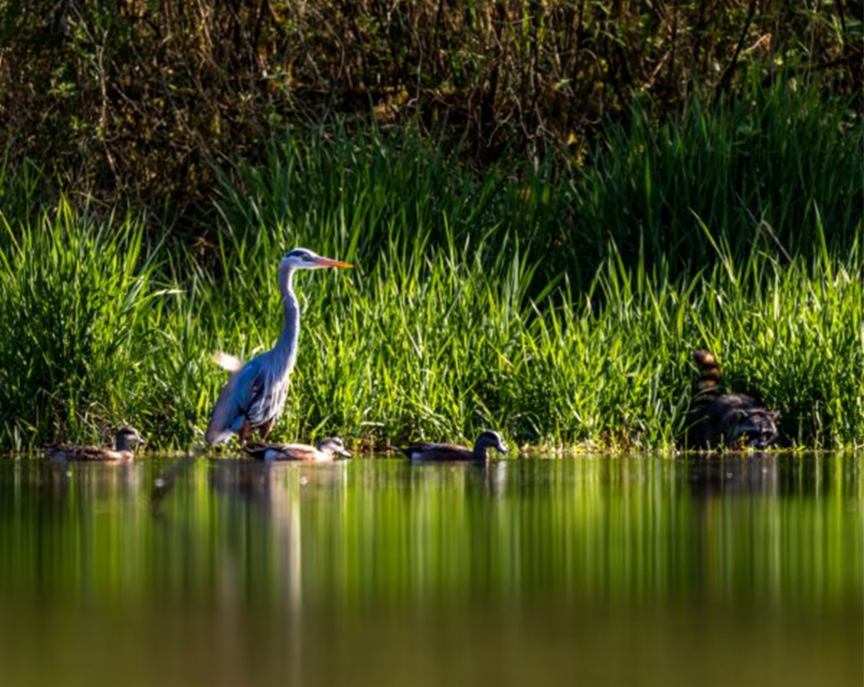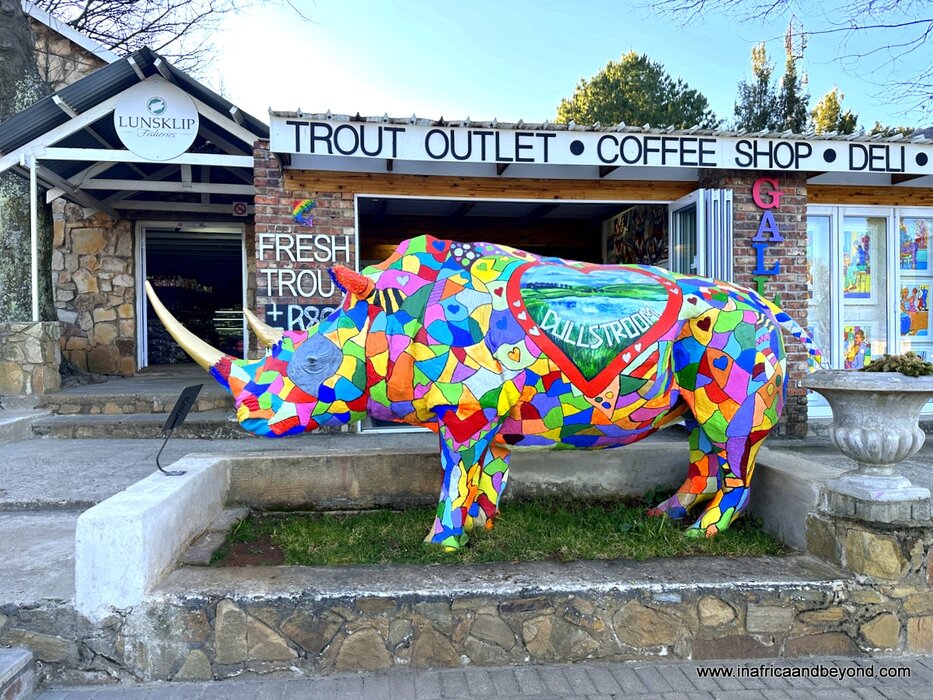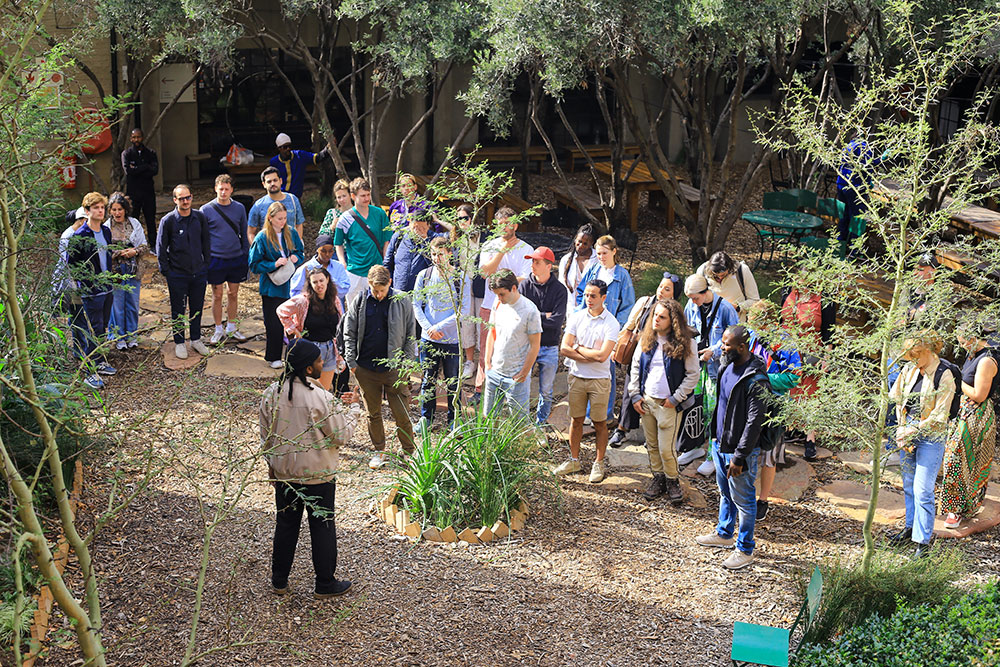

All crops require water, which they receive from both natural sources, such as rainfall, and artificial ones, such as irrigation. While access to plenty of water is a critically important element of any successful farming operation, it has a major downside in terms of environmental impact: agricultural runoff, which carries harmful nutrients, sediments, and chemicals into the local watershed. These substances can have a negative impact on both local wildlife and nearby human populations.
To mitigate the effects of runoff and protect the health of the environment, many farmers implement practical prevention strategies to eliminate the presence of harmful chemicals and other substances. Below, we’ll outline a few of the most widely used of these strategies, helping to demonstrate how farmers protect aquatic ecosystems and biodiversity while still maintaining a thriving agricultural economy.
What Causes Runoff?
The water that flows across a plot of farmland ends up in one of three places. First, some of it will enter the soil, where it is absorbed by the crops and used to facilitate growth. The rest of it will remain in the soil as groundwater, be lost to evaporation, or flow from the farm into the surrounding area.
Water from rainfall and irrigation tends to return to other nearby water sources, flowing downhill and entering lakes, rivers, reservoirs, and the ocean. Water that has flowed from a farm, however, picks up a number of harmful substances as it does so: the byproducts of fertilizer use, such as nitrogen; dirt and other sediments; and chemicals, such as pesticides. Each of these can enter the environment and create problems for both humans and wildlife.
Nitrogen is a vital nutrient in agriculture, necessary for plant life to thrive. However, when too much enters the environment, it can cause algae and other phytoplankton to grow out of control, leading to a depletion of oxygen and other resources. This can devastate biodiversity in an area, as the algae becomes the only thing that can survive.
Sediments may have the opposite effect, as the presence of mud and dirt in the water blocks the sunlight from reaching the plant life, destabilizing the fragile food web. Chemical pesticides can toxify the environment, building up in the bodies of wildlife and ultimately causing a great deal of harm. The negative impact of pesticides on human health has also been well-studied, as it is thought to contribute to diseases such as cancer and Parkinson’s.
Using Buffer Zones
One of the key prevention strategies farmers are now using to protect local ecosystems from runoff is the riparian buffer zone, a method championed by farming coalitions such as the Washington State Potato Commission. A buffer zone is an area between the farm and the surrounding lands that serves as a barrier to protect from runoff. These are beneficial in several ways, but their low maintenance requirements are among the greatest appeals. Once put in place, buffer zones can continually perform their task with little or no upkeep.
As the purpose of buffer zones is to block and absorb the flow of water containing contaminants, there are multiple types of areas that will serve for the task. Some buffer zones are simply wide-open spaces of uncultivated land. Provided these land spaces are large enough, this may be all that is necessary to slow the flow of water and block pollutants from reaching watersheds. In other cases, large ditches are dug for the water to flow into.
Among the most effective and beneficial methods of providing a buffer, however, is the use of natural vegetative land to prevent the flow of runoff. By surrounding farms with native plant life, farmers not only create a large natural barrier to absorb contaminants, but they also create a habitat for beneficial insects, such as pollinators, and other wildlife species that the local environment depends on.
The Importance of Cover Crops
Similar to the vegetative buffer zones mentioned above, cover crops can serve as a barrier while also providing a habitat for critical local wildlife. While buffer zones are made up of naturally grown native plant life, cover crops are non-cash crops planted and cultivated by farmers for the specific purpose of protecting the environment from agricultural runoff.
Cover crops provide a variety of benefits when it comes to reducing runoff: First, the roots of the plants serve as powerful natural anchors for the soil, preventing the erosion that would otherwise occur (excessive erosion is generally the result of loose, uncompacted soil). The plants themselves also serve as natural “sponges” to absorb contaminants. They eagerly absorb nutrients, such as nitrogen, and chemicals, such as fertilizers, while also diluting pesticides to the point where they do not cause undue harm to nearby wildlife.
Cover crops also have a beneficial effect on the soil itself, potentially reducing the need for some of the contaminants that would otherwise end up in runoff. For example, as these crops go through their natural life cycle, they “recycle” the surrounding soil and return natural nutrients to it. By providing a home for beneficial pollinators such as bees and butterflies, cover crops can also provide a boost to the health of surrounding plant life, including agricultural crops.
Responsible Fertilizer Use
One of the most crucial methods for reducing and preventing the negative environmental impact caused by runoff is to reduce the use of chemicals in the first place. The responsible use of both fertilizers and pesticides is something that all farms should focus on, particularly if they border environments that are vulnerable to contamination from runoff.
While fertilizers are crucial for the productive growth of healthy crops, the fact remains that they are often overused. Farmers can reduce their reliance on fertilizers by using more natural methods of encouraging crop growth. For example, crop rotation ensures that soil is kept viable and healthy by continuously switching out the type of crops that are grown on a given plot of land. This method works because different crops have different nutritional needs. This method also helps to reduce the need for pesticides, as it disrupts the life cycles of harmful pest insects that would otherwise take hold.
Farmers can also reduce their reliance on fertilizers and pesticides by using software to track crop growth cycles. This allows them to utilize chemicals at the moment they have the greatest benefit, vastly increasing the efficiency of their use and reducing the amount needed.
By implementing the above techniques, farmers can greatly reduce the environmental impact of their agricultural practices, contributing to a cleaner watershed and healthier fish and wildlife.
Publisher: Source link
Latest Posts
-
31 July 2025
-
26 July 2025
-
14 July 2025
-
01 July 2025
-
07 August 2025
-
29 July 2025
-
20 February 2025
-
04 February 2025
Newsletter
Sign up for free and be the first to get notified about new posts.
Get The Best Blog Stories into Your icountox!
Sign up for free and be the first to get notified about new posts.










